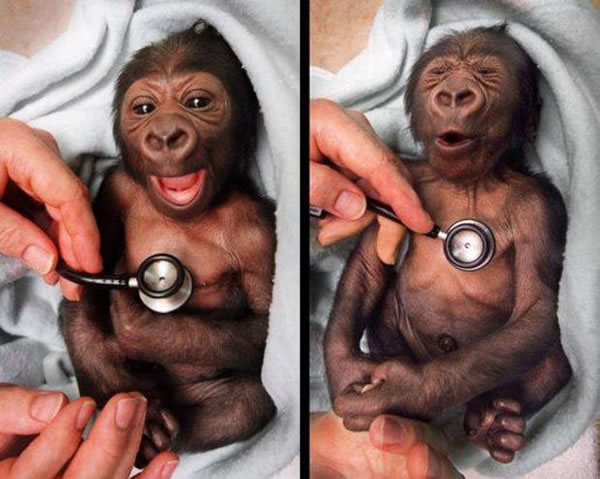
Science Debate is a group that's working to get political candidates
in the United States actually talking publicly about issues of science
and technology policy. In 2008, they tried (and failed) to get Barak
Obama and John McCain to agree to a live, televised science debate. But
they did get both candidates to send in written answers to 14 key
questions.
This election cycle, Science Debate sent out a new set of 14
questions—all chosen from a crowdsourced list. Today, they announced
that they'd gotten answers back from both Obama and Mitt Romney.
You can compare the candidates side-by-side at the Science Debate website.
I have to say that, while I disagree with a lot of Romney's
conclusions, I was pleasantly surprised by the amount of thought and
time his staff clearly put into writing some very long and detailed
responses.
Perhaps most surprising was his response to a question about climate
change. Instead of attempting to flatly deny the evidence, Mitt Romney
has apparently moved on to acknowledging that climate change is
happening—while simultaneously overplaying the uncertainty surrounding
specific risks,
and claiming that even if climate change
is a big problem there's nothing we can really do about it anyway ... because China.
Personally, I think that's pretty interesting. Climate scientists,
and the journalists who write about them, have been talking,
anecdotally, about seeing this exact rhetorical shift happening in
conservative circles. It seems that the Republican presidential nominee
is now one of the people who acknowledge climate change exists, but
would still rather not take any decisive steps to deal with it.
I happen to think that's a dumb position. After all, even if the
United States can't stop climate change alone, the kinds of policies
that would reduce our dependence on fossil fuels would also help us
adapt and thrive despite climate shifts and fossil fuel depletion. But
this is still a step in the right direction. As several climate
scientists I've spoken with have said, we can disagree on the policy.
But it's high time we stop pretending that we can't see the changes
happening all around us.
Mitt Romney: I am not a scientist myself, but my best
assessment of the data is that the world is getting warmer, that human
activity contributes to that warming, and that policymakers should
therefore consider the risk of negative consequences. However, there
remains a lack of scientific consensus on the issue — on the extent of
the warming, the extent of the human contribution, and the severity of
the risk — and I believe we must support continued debate and
investigation within the scientific community.
Ultimately, the science is an input to the public policy decision; it does not dictate a particular policy response.
President Obama has taken the view that if global warming is
occurring, the American response must be to slash carbon dioxide
emissions by imposing enormous costs on the U.S. economy. First he tried
a massive cap-and-trade bill that would have devastated U.S. industry.
When that approach was rejected by Congress, he declared his intention
to pursue the same course on his own and proceeded through his EPA to
impose rules that will bankrupt the coal industry.
Nowhere along the way has the President indicated what actual results
his approach would achieve — and with good reason. The reality is that
the problem is called Global Warming, not America Warming. China long
ago passed America as the leading emitter of greenhouse gases. Developed
world emissions have leveled off while developing world emissions
continue to grow rapidly, and developing nations have no interest in
accepting economic constraints to change that dynamic. In this context,
the primary effect of unilateral action by the U.S. to impose costs on
its own emissions will be to shift industrial activity overseas to
nations whose industrial processes are more emissions-intensive and less
environmentally friendly. That result may make environmentalists feel
better, but it will not better the environment.
So I oppose steps like a carbon tax or a cap-and-trade system that would
handicap the American economy and drive manufacturing jobs away, all
without actually addressing the underlying problem. Economic growth and
technological innovation, not economy-suppressing regulation, is the key
to environmental protection in the long run. So I believe we should
pursue what I call a “No Regrets” policy — steps that will lead to lower
emissions, but that will benefit America regardless of whether the
risks of global warming materialize and regardless of whether other
nations take effective action.
For instance, I support robust government funding for research on
efficient, low-emissions technologies that will maintain American
leadership in emerging industries. And I believe the federal government
must significantly streamline the regulatory framework for the
deployment of new energy technologies, including a new wave of
investment in nuclear power. These steps will strengthen American
industry, reduce greenhouse gas emissions, and produce the
economically-attractive technologies that developing nations must have
access to if they are to achieve the reductions in their own emissions
that will be necessary to address what is a global issue.
Also, it's worth noting that we've used a cap and trade system in the
United States before. When we did, it not only worked well, it did the
job way more cheaply than anyone had guessed.
Remember acid rain? That's caused by sulfur dioxide emissions,
produced largely by burning coal. We drastically reduced those emissions
(making our air cleaner, people healthier, and ecosystems safer)
through a cap and trade system that went into effect in 1995. At the
time,
according to management consulting firm McKinsey and Company, analysts thought it would cost between $3 and $25 billion to clean up America's skies. Instead, it cost about $1.4 billion.
That's because things like cap and trade aren't really about the
government choosing winners and losers. Instead, it's about letting
government do what it does best—i.e., setting national priorities that
allow us to take long-term action on issues that affect all
Americans—and then letting industry do what it does best. When
government sets the priorities, industries will find ways to meet those
priorities cheaply.











 Even in the 21
Even in the 21




















